Weybourne |
|
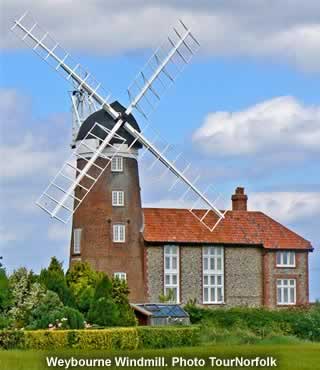 |
|||
Britain > North Norfolk > Weybourne |
||||||
A North Norfolk coastal village which was of great interest to smugglers |
||||||
Listen to this article |
||||||
|
||||||
Unlike many of Norfolk's coastal villages, Weybourne doesn't have a golden sandy beach. The shore here is known instead for its steep shingles and its deep water. A few years ago, this fact proved to be of great interest to smugglers. By using Weybourne's deep waters, they could anchor their ships much closer to the coast and speed up their operations. Contraband was sneaked into the country for years this way, including packages of gin, brandy and tobacco. |
||||||
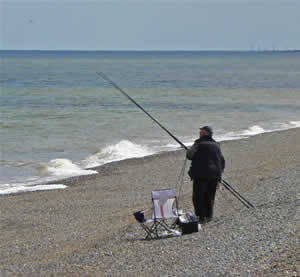 Fishing from Weybourne beach, where smugglers once operated |
||||||
There are several legends associated with the smugglers, of varying plausibility. One of them involves the smugglers' accomplices, who would wait on the shore to meet the incoming boats. Their problem was that there was nowhere on the beach for them to hide while they waited. Apparently, they got around this problem by burying themselves neck-deep in the shingles! |
||||||
|
||||||
Another legend is that the owner of the Weybourne windmill was in on the scheme. If he spotted any nearby coastguard or customs officials, he would warn the smugglers by stopping the sails of his windmill in the shape of a cross. The mill is still there today, and it still acts as a local landmark. It was the site of further illegal activity during World War II. The residents were caught sending messages out to waiting ships using lights mounted to the top of the mill. |
||||||
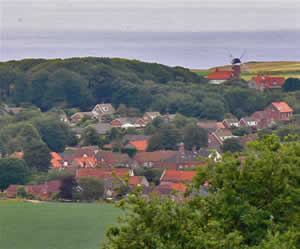 The view over Weybourne, with the windmill being a distinctive landmark |
||||||
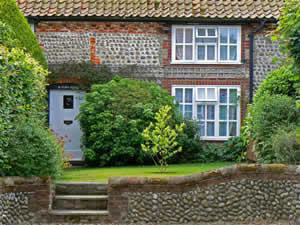 A flint cottage in Weybourne |
||||||
This wasn't the only part Weybourne played in the war. The deep water here made it a possible spot for invasion, so extensive defences were put in place, including gun emplacements, anti-tank ditches and landmines on the beach. In addition, the military set up an anti-aircraft artillery site to shoot down any bombers. In 1941, the site was visited twice by none other than Winston Churchill himself. In 1988, this very same place reopened as a museum. It's home to the Muckleburgh Collection, which is the largest privately owned collection of military equipment in the country. There are dozens of artillery guns, planes, tanks and other vehicles, many of which are still in perfect working order. |
||||||
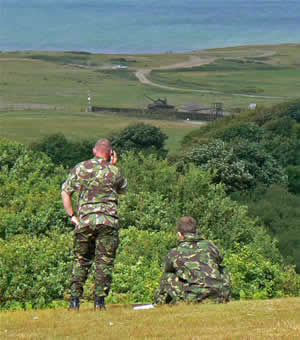 Soldiers overlooking the Muckleburgh Collection |
||||||
Weybourne's most recognisable landmark is the All Saint's Church. This would be a normal 15th century church if it weren't for one unusual detail. It was built almost directly on top of another church! A 12th-century priory used to stand here and, although much of it is in ruins, some of it still exists. In fact, if you're looking from a distance, All Saint's Church appears to have two towers. Don't be fooled though because one of them is just an old ruin. |
||||||
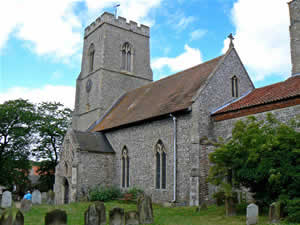 Weybourne All Saint's Church |
||||||
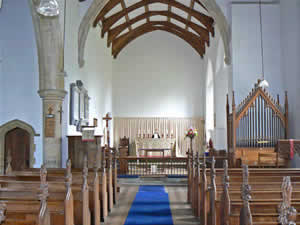 Inside the church |
||||||
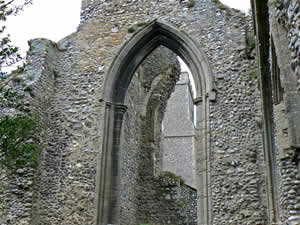 The Priory ruins in the churchyard |
||||||
Just across the road from the church is another building that's at the heart of village life: the pub. It's called The Ship Inn, and most of the villagers will come through here regularly. They serve good food and have a real fire on cold days. |
||||||
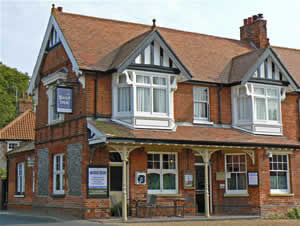 Weybourne Ship Inn |
||||||
From Weybourne, you can easily explore many of Norfolk's other coastal towns and villages. One of the best ways to travel is via the North Norfolk Railway. This heritage line runs for around 17 kilometres between Sheringham and Holt. Weybourne is at the midpoint of these two stations, and it takes about ten minutes to reach either one. The trains are all historic steam or diesel locomotives, and on their journey, they pass through some of Norfolk's best scenery. During the warmer months, the flowers are particularly eye-catching. It's thanks to these that the North Norfolk Railway is nicknamed "The Poppy Line". |
||||||
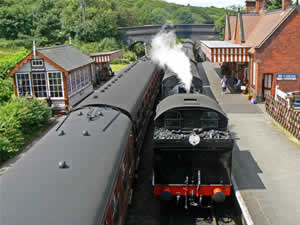 Weybourne Station on the North Norfolk Railway |
||||||
|
||||||
|
||||||
Car-parking can be found at the beach (paid) and at the North Norfolk Railway Station. For Muckleburgh Hill park in the small housing estate opposite the entrance. |
||||||
|
Pocket Britain is optimised for use on a smartphone or tablet with internet access. All content is subject to copyright. All reasonable methods have been used to ensure information supplied is accurate at the time of publication. However, it is advisable to check information before relying on it. Privacy Policy |